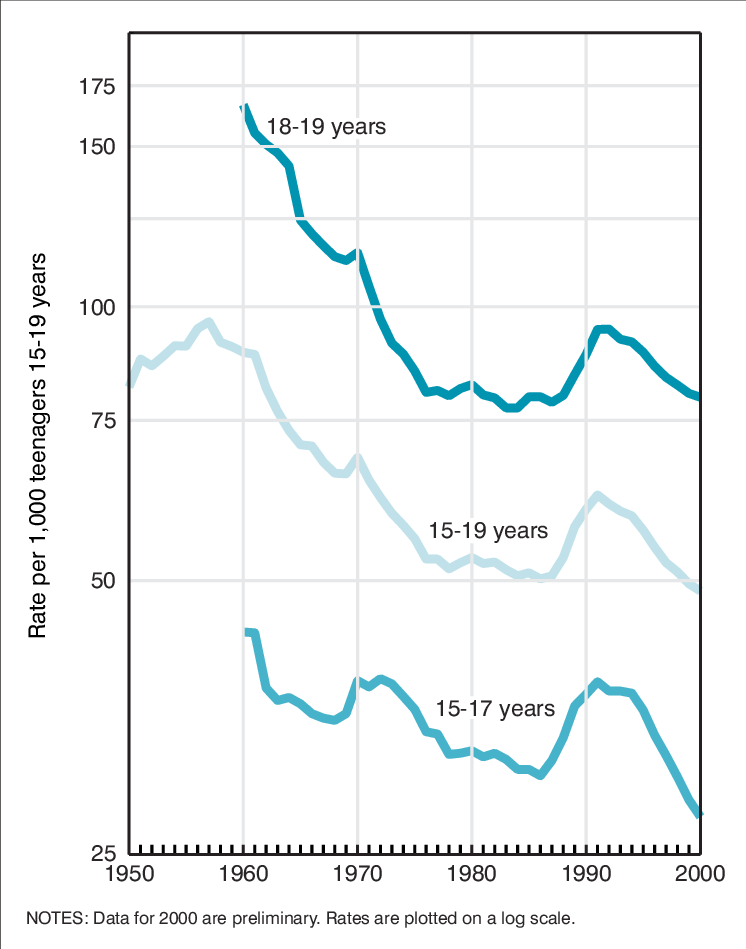
Teenage Pregnancy in the 1950s: A Historical Perspective
The 1950s, an era characterized by economic prosperity and social conservatism, witnessed a significant rise in teenage pregnancy rates in the United States. This phenomenon, often referred to as the "teen pregnancy epidemic," had far-reaching consequences for both the individuals involved and society as a whole.
Social and Cultural Context
The 1950s was a time of rapid social and cultural change. The post-World War II economic boom led to increased affluence and a growing consumer culture. This, in turn, influenced the values and behaviors of young people.
The prevailing social norms of the time emphasized traditional gender roles and the importance of marriage and family. However, the increasing availability of contraception and the growing influence of popular culture challenged these norms.
Factors Contributing to Teen Pregnancy
A complex interplay of factors contributed to the rise in teenage pregnancy rates in the 1950s. These included:
- Lack of Comprehensive Sex Education: Schools and parents often shied away from discussing sex with teenagers, leaving them ill-informed about contraception and reproductive health.
- Limited Access to Contraception: Birth control was not widely available or socially acceptable for unmarried teenagers.
- Peer Pressure and Social Norms: In some communities, teenage pregnancy was seen as a rite of passage or a way to gain social status.
- Economic Disadvantage: Poverty and lack of opportunity made it difficult for some teenagers to avoid early pregnancy.
Consequences for Individuals
Teenage pregnancy had a profound impact on the lives of young women and their children.
- Educational Attainment: Pregnant teenagers were more likely to drop out of school, limiting their future educational and economic opportunities.
- Health Risks: Teen mothers faced increased risks of health complications during pregnancy and childbirth.
- Economic Hardship: Teenage parents often faced financial difficulties, as they had limited earning potential and often lacked the necessary support systems.
- Social Stigma: Teen pregnancy carried a significant social stigma, leading to isolation and discrimination.
Consequences for Society
The teen pregnancy epidemic also had broader implications for society:
- Increased Welfare Costs: Teenage pregnancies contributed to the growing welfare rolls, as young parents often relied on government assistance.
- Social Problems: Teen pregnancy was associated with an increased risk of poverty, crime, and other social problems.
- Intergenerational Effects: Children born to teenage mothers were more likely to experience health, educational, and social challenges themselves.
Government and Social Responses
The government and social welfare organizations recognized the seriousness of the teen pregnancy problem and took steps to address it.
- Increased Funding for Family Planning: The government allocated funding for family planning programs, which provided contraception and counseling to teenagers.
- Establishment of Teenage Pregnancy Prevention Programs: Non-profit organizations and community groups developed programs aimed at preventing teen pregnancy through education, counseling, and support services.
- Changes in Social Norms: Gradually, social attitudes towards teen pregnancy began to shift, with more people recognizing the importance of comprehensive sex education and access to contraception.
Decline in Teen Pregnancy Rates
By the late 1960s, teen pregnancy rates began to decline. This was attributed to a combination of factors, including:
- Increased Availability of Contraception: The development and widespread availability of the birth control pill made it easier for teenagers to prevent pregnancy.
- Improved Sex Education: Schools and parents became more open to discussing sex with teenagers, providing them with accurate information about contraception and reproductive health.
- Changes in Social Norms: The stigma associated with teen pregnancy gradually diminished, making it less socially acceptable.
Legacy of the 1950s Teen Pregnancy Epidemic
The teen pregnancy epidemic of the 1950s left a lasting legacy on American society. It highlighted the importance of comprehensive sex education, access to contraception, and social support for young people.
While teen pregnancy rates have declined significantly since the 1950s, it remains a persistent problem, particularly among marginalized and disadvantaged communities. Understanding the historical context and factors that contributed to the epidemic can help us develop more effective strategies for preventing teen pregnancy in the future.